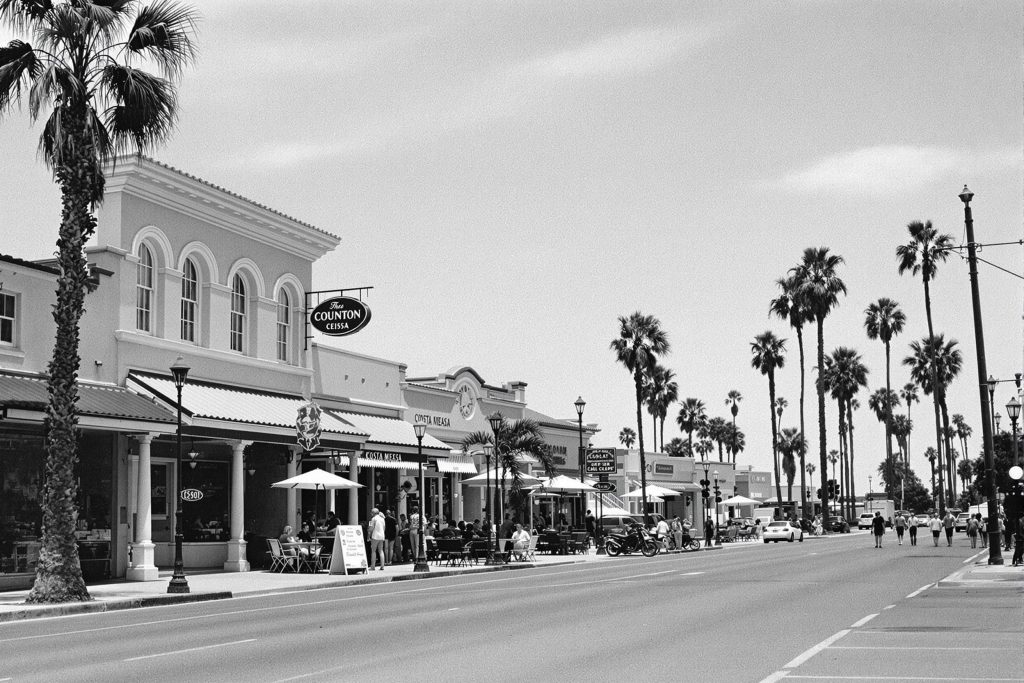
Costa Mesa was founded by native American Indians who settled on the mesa near the banks of the Santa Ana River on the “coastal tableland” above Newport Beach. Artifacts discovered here indicate that this location was once part of the Lukup village.
Mission San Juan Capistrano was founded in 1776 six Spanish leagues southeast of what is now Costa Mesa. The Padres would come to Lukup on occasion. When the Capistrano cattle (made famous by Richard Henry Dana in his memoir “Two Years Before the Mast”) grazed in the Costa Mesa area in the early 1800s, provisions for the shepherds had to be provided. A tiny adobe (above) was built to house the majordomo and his men as early as 1817, but most likely between 1820 and 1823. This structure still stands at 1900 Adams Street, where it was recently repaired and turned into a museum by the city.
This same territory was included in the Spanish land grant given to Jose Antonio Yorba by Santiago Del Santa Ana in 1810. In 1880, residents began purchasing pieces of the rancho from Yorba’s heirs, and the town of Fairview was founded in the same decade. Near the current junction of Harbor and Adams, a schoolhouse and a church were built, as well as a 25-room hotel for tourists to the local hot sulfur springs. However, in early 1889, a storm washed out the railroad, causing financial ruin for the village, which was quickly reduced to an agricultural settlement.
By this time, the Santa Ana and Newport Railroad had created the small town of Harper, named after a nearby rancher. Ozment’s General Store, which opened in 1909 and was located on the corner of Newport and 18th Streets, was the city’s first post office.
Harper officially changed its name to Costa Mesa on May 11, 1920, which means coastal tableland in Spanish, and continued to farm sweet potatoes, corn, tomatoes, strawberries, and apples as an agricultural community.
When the Great Depression hit Southern California, the construction and oil drilling sectors were just getting started, bringing new life to the city. Industries failed, and the local bank went bankrupt. When the town was shaken by an earthquake in 1933, businesses and the Main School were damaged. However, the school was quickly restored and reopened as the Clara McNally School. These structures are presently used for administrative and service purposes within the institution.
Costa Mesa is now an important economic and industrial hub in Orange County. The population was 113,143 according to the 2005 Census. Pacific Symphony and the South Coast Repertory Theater are located in the city, which formally adopted the tagline “The City of the Arts” in 1999. In 1985, the 3,000-seat Segerstrom Center for the Arts (formerly known as Orange County Performing Arts Center) opened. The 500-seat Samueli Theater and the 2,000-seat Renee and Henry Segerstrom Concert Hall both had their grand openings in 2006.
Thousands of people came to the area during World War II for training at the Santa Ana Army Air Base, which is now the Orange County Fairgrounds, Orange Coast College, and the Civic Center. When the war ended, many of these men and women returned to their homes with their families, kicking off a population boom that is still going on today.
The city was incorporated on June 29, 1953, and the City Council-Manager system of governance was chosen. The new city had a population of 16,840 people and covered an area of 3.5 square miles. By 1988, the population had risen to 90,000 people and the area had grown to 17 square miles.
Costa Mesa has grown from a quiet suburban neighborhood with rich farming origins to a world-class city with some of the best restaurants, retail centers, and cultural arts in the country, as well as being the action sports industry’s capital.
For more information, please visit the Costa Mesa Historical Society website.
HERE Costa Mesa strives to provide the finest deals, products, and experiences in your local community. It’s all RIGHT HERE, and it’s all LOCAL.
If you notice something that you believe should be here, please let us know. And you’ll notice it soon HERE!
© Copyright 2025, HERECity.com